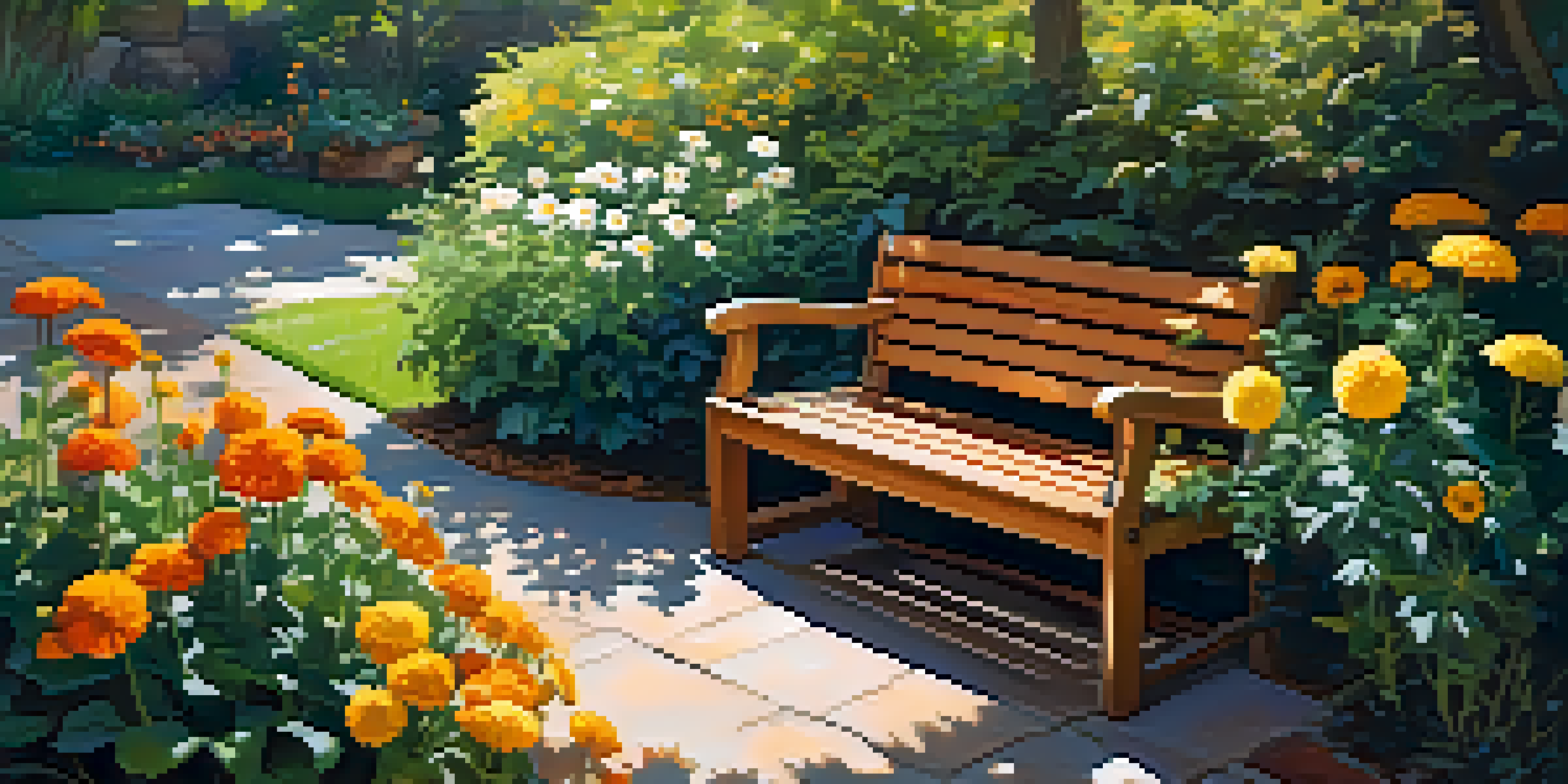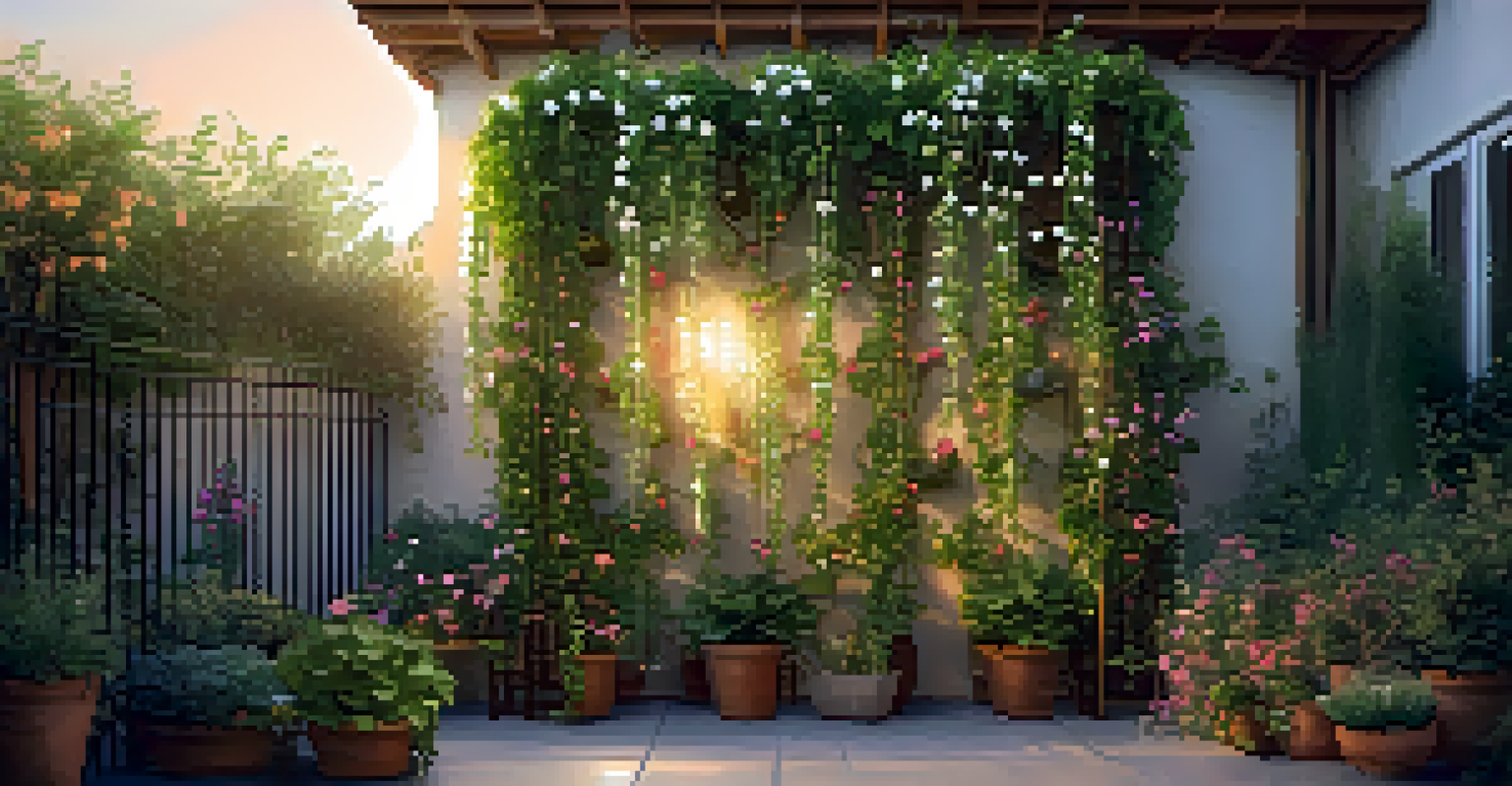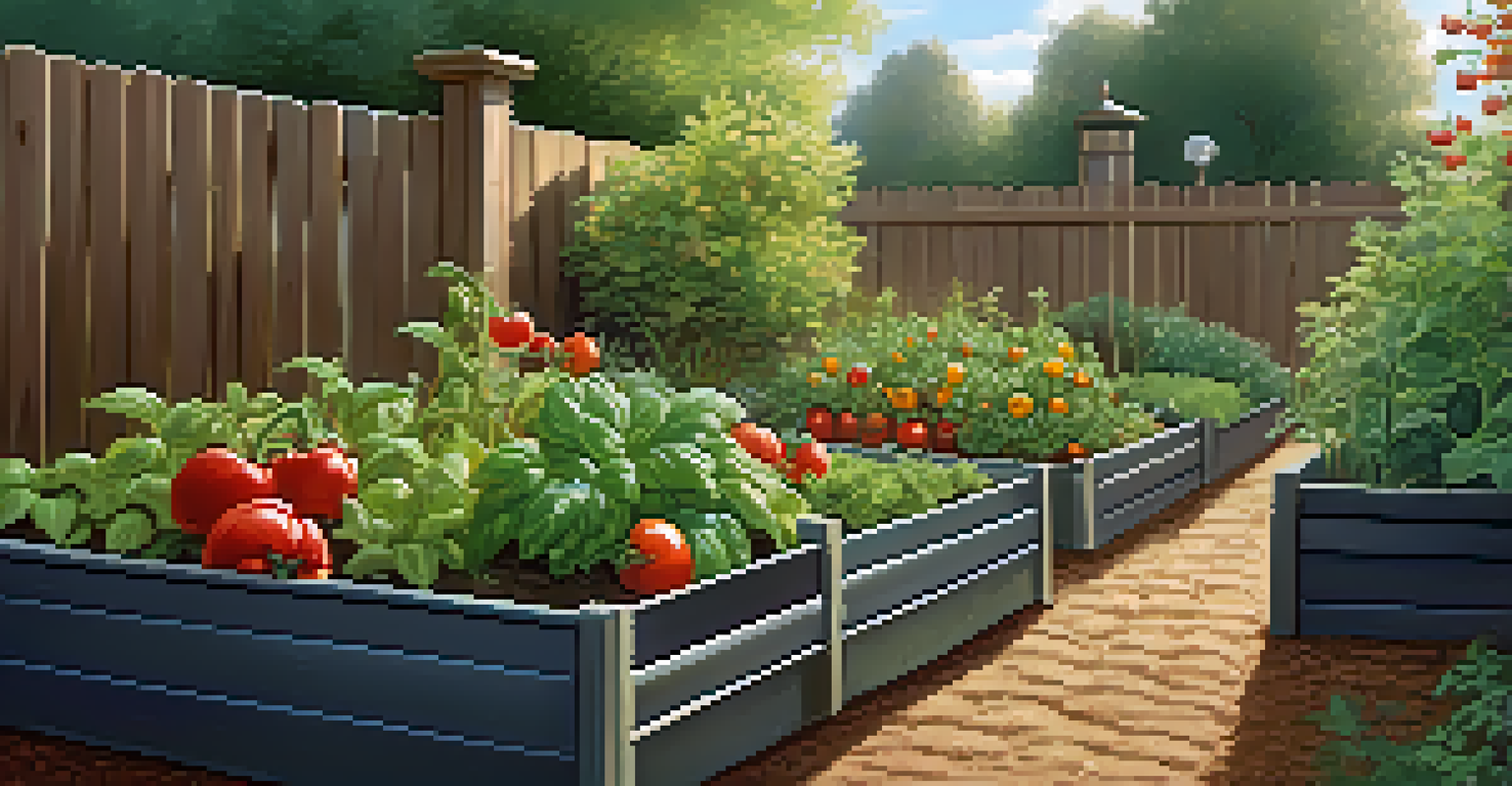Plant Selection for Small Gardens: Grow What You Love

Understanding Your Small Garden Space and Climate
Before diving into plant selection, it's crucial to assess your garden space. Take note of factors such as sunlight, shade, and wind exposure. Understanding these elements will guide you in choosing plants that thrive in your specific environment.
To plant a garden is to believe in tomorrow.
Additionally, consider your local climate. Are you in a region with hot summers, cold winters, or a more temperate climate? Researching hardiness zones can help you select plants that will flourish year-round, ensuring your garden remains vibrant no matter the season.
Lastly, remember that small gardens can often present unique challenges like limited space and soil quality. Embrace this by opting for plants that not only survive but also enhance the beauty of your garden, making the most of every inch.
Choosing Plants You Love: The Heart of Your Garden
Selecting plants for your small garden should be a reflection of what you love. Whether it's the cheerful blooms of daisies or the soothing scent of lavender, choose plants that resonate with you. This personal connection will make gardening more enjoyable and fulfilling.

Think about how you want to use your garden space. Do you envision a cozy retreat, a vibrant gathering area, or a productive vegetable patch? Tailoring your plant choices to your lifestyle will create a garden that not only looks good but also serves a purpose.
Assess Your Space and Climate
Understanding your garden's sunlight, shade, and local climate will help you choose the right plants for a thriving environment.
Furthermore, don’t shy away from incorporating sentimental plants. Maybe it’s a flower that reminds you of a loved one or a herb you used in family recipes. These personal touches can transform your garden into a cherished sanctuary.
Emphasizing Color and Texture in Your Plant Selection
Color and texture play vital roles in creating visual interest in small gardens. Mixing different hues can add depth and excitement to your space. For instance, pairing vibrant marigolds with lush green foliage can create a striking contrast that draws the eye.
Gardening adds years to your life and life to your years.
Texture is equally important; combining smooth leaves with spiky plants can create a dynamic look. Consider using plants with varied leaf shapes and sizes to add complexity and intrigue. This variety can make your garden feel more expansive, even within limited space.
Don’t forget about seasonal changes in color and texture; choose plants that bloom at different times. This strategy ensures that your garden remains lively throughout the year, providing a fresh look every season.
Incorporating Edibles: A Tasty Twist for Small Gardens
Edible plants are a fantastic addition to any small garden. Not only do they provide fresh produce, but they also offer unique textures and colors. Imagine picking ripe tomatoes or fragrant basil right from your garden—it's a rewarding experience that enhances your culinary adventures.
When planning your edible garden, opt for compact varieties that are perfect for small spaces. Look for dwarf fruit trees, container-friendly vegetables, or herbs that grow well together. This approach maximizes your yield while keeping your garden tidy and manageable.
Choose Meaningful Plants
Selecting plants that resonate with you personally will not only enhance the beauty of your garden but also make gardening more enjoyable.
Additionally, consider companion planting, which involves pairing plants that benefit each other. For example, planting basil alongside tomatoes can enhance flavor and deter pests, making your small garden both productive and harmonious.
Seasonal Planting: Maximizing Bloom Throughout the Year
To keep your small garden vibrant, consider a seasonal planting strategy. This means selecting plants that bloom at different times throughout the year. By doing this, you can enjoy a continuously changing landscape that never feels dull.
Start by researching which plants thrive in your region during each season. For instance, spring might be ideal for tulips and daffodils, while summer can feature zinnias and sunflowers. Planning this way ensures that your garden is always alive with color and life.
Moreover, incorporating perennials can provide a reliable backbone for your garden's structure. These plants return year after year, allowing you to focus on adding seasonal annuals that complement their beauty.
Creating Vertical Gardens: Saving Space with Style
In a small garden, vertical gardening is a game-changer. By growing plants upward rather than outward, you can maximize your space while adding visual interest. Consider trellises, wall planters, or hanging pots to create a stunning display.
Climbing plants like peas, beans, or flowering vines can add height and charm to your garden. These plants not only save ground space but also create a lush, green backdrop that enhances the overall aesthetic of your small garden.
Maximize Space with Vertical Gardens
Incorporating vertical gardening techniques allows you to grow upwards, optimizing limited space while adding visual interest to your small garden.
Additionally, vertical gardens are perfect for urban settings where ground space is at a premium. They allow you to cultivate a variety of plants while bringing a touch of nature to your surroundings, making even the smallest spaces feel inviting.
Maintenance Tips for a Thriving Small Garden
Maintaining a small garden can be straightforward and rewarding. Regular watering, weeding, and pruning will keep your plants healthy and thriving. Establish a routine that fits your schedule, making garden care a joyful part of your week rather than a chore.
Consider incorporating mulching to retain moisture and suppress weeds. This simple technique not only conserves water but also enriches the soil as it breaks down, promoting a healthier garden ecosystem.

Finally, keep an eye on your plants for any signs of pests or disease. Early detection and intervention can prevent small issues from becoming larger problems, ensuring that your garden remains a beautiful retreat for you and your loved ones.